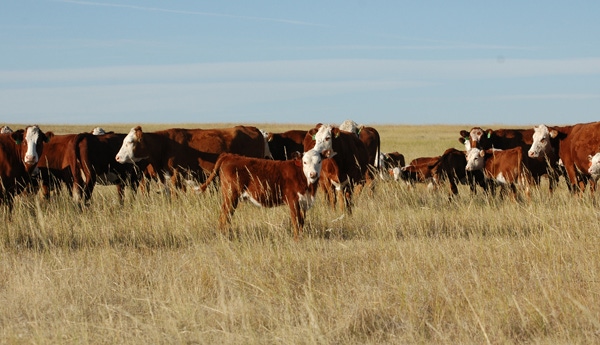Profit Per Cow, Or Per Acre?
July 25, 2012

To ranch successfully, three profit driving ratios – cows per person, acres per cow and fed vs. grazed feed need to be kept in mind. In addition, “revenue per acre” needs to be considered.
As livestock producers we often focus on productivity per cow. But that focus, along with intensive selection for growth, hasn’t done much to improve ranch profitability over the last 40 years. In fact, it could be argued that, in constant dollars or buying power, profit per acre has even decreased. Thus, the real measure should be profit per acre or whole ranch profitability.
When we change our thinking from per cow to per acre, we begin to think of ways to improve whole ranch revenue. That’s good if we remember that “war on cost” is one of the essentials for successful ranch management.
Please understand that I don’t have a problem spending a dollar if I can reasonably expect it to return $1.50, but I don’t want to spend a dollar if it will only bring back 50¢. Too often, in our attempts to increase revenue per acre, we fail to account for all of the costs. When we attempt to increase revenue per cow, it can get even worse. We forget that when cows get bigger and produce more milk, we have to run less of them or spend significantly more for feed and supplements.
I consider money spent for water development and fencing to facilitate good grazing to have a very good cost/benefit ratio. However, you must plan well to have effective, low-maintenance structures that also have a reasonable cost relative to the expected return. In areas of good rainfall, or where irrigation is used, it’s quite easy to project a good return for grazing management.
I know a rancher who talks about the number of sections in a pasture, or cows per section. In this scenario, the cost of water development and fence per acre compared to the potential new revenue must be carefully evaluated.
Fence is an issue, but water development is a big issue. The area has brief and sometimes heavy rains which could provide water for manmade ponds or catchments. However, in its present condition, there is a lot of bare ground resulting in silt deposits filling the catchments. The well-water quality is poor and small particles tend to adhere to the inside of pipelines making them smaller as time goes by.
In low-rainfall areas with poor water distribution, costs must be considered very carefully. The revenue increases will come from increased productivity – but at much lower rates than in higher rainfall areas – and from using areas of pastures that were not previously used for lack of water. So, assessing options is much more difficult than in situations with ample water of good quality and with greater initial carrying capacity.
While I find it relatively easy to justify spending for fence and water in most range and pasture management situations, it’s not as easy to justify the use of some other cattle improvement techniques – artificial insemination (AI), estrus synchronization (ES), individual animal records, feed supplements, etc. Though I’m sure that many of these tools have their place, I’m also sure that some can’t be cost-justified on some ranches.
Considering AI in conjunction with ES, for example, it’s important to ensure that you itemize all the costs. These include materials, drugs, semen, equipment, labor, animal gathering and handling costs. Then there’s the performance lost due to animal gathering and handling, etc. You must also make sure you don’t inflate the expected results, while deflating the results of natural service.
Sometimes, it may prove to work nicely with heifers but not with cows. Try to imagine all the unintended consequences –both good and bad. Ask yourself, “What if it were 5% better or 5% worse?” Certainly, many ideas and techniques for animal improvement have a justifiable place, but they often have intrigue and attraction beyond their value. As you complete your analysis, remember to get to the added net income per acre.
It’s very easy to get caught up in production or profit per cow rather than profit per acre or whole ranch profit. The result can be fewer cows and poorer performance that results in less production per acre or a bigger supplementation bill – perhaps both.
If we focus on profit per acre, there will be a tendency to seek the right-sized cow for our environment and best practices for economic efficiency and profitability.
In the final analysis profit per acre is much more important than profit per cow.
Burke Teichert, consultant on strategic planning for ranches, is retired as vice president and general manager of Deseret. He can be reached at [email protected].
You might also like:
Young ranchers, listen up: 8 tips from an old-timer on how to succeed in ranching
13 utility tractors that will boost efficiency in 2016
Burke Teichert: How to cull the right cow without keeping records
3 weaning methods compared; Which one rises to the top?
6 tips for proper electric fence grounding
9 things to include in your ag lease (that you better have in writing!)
About the Author(s)
You May Also Like


.png?width=300&auto=webp&quality=80&disable=upscale)
